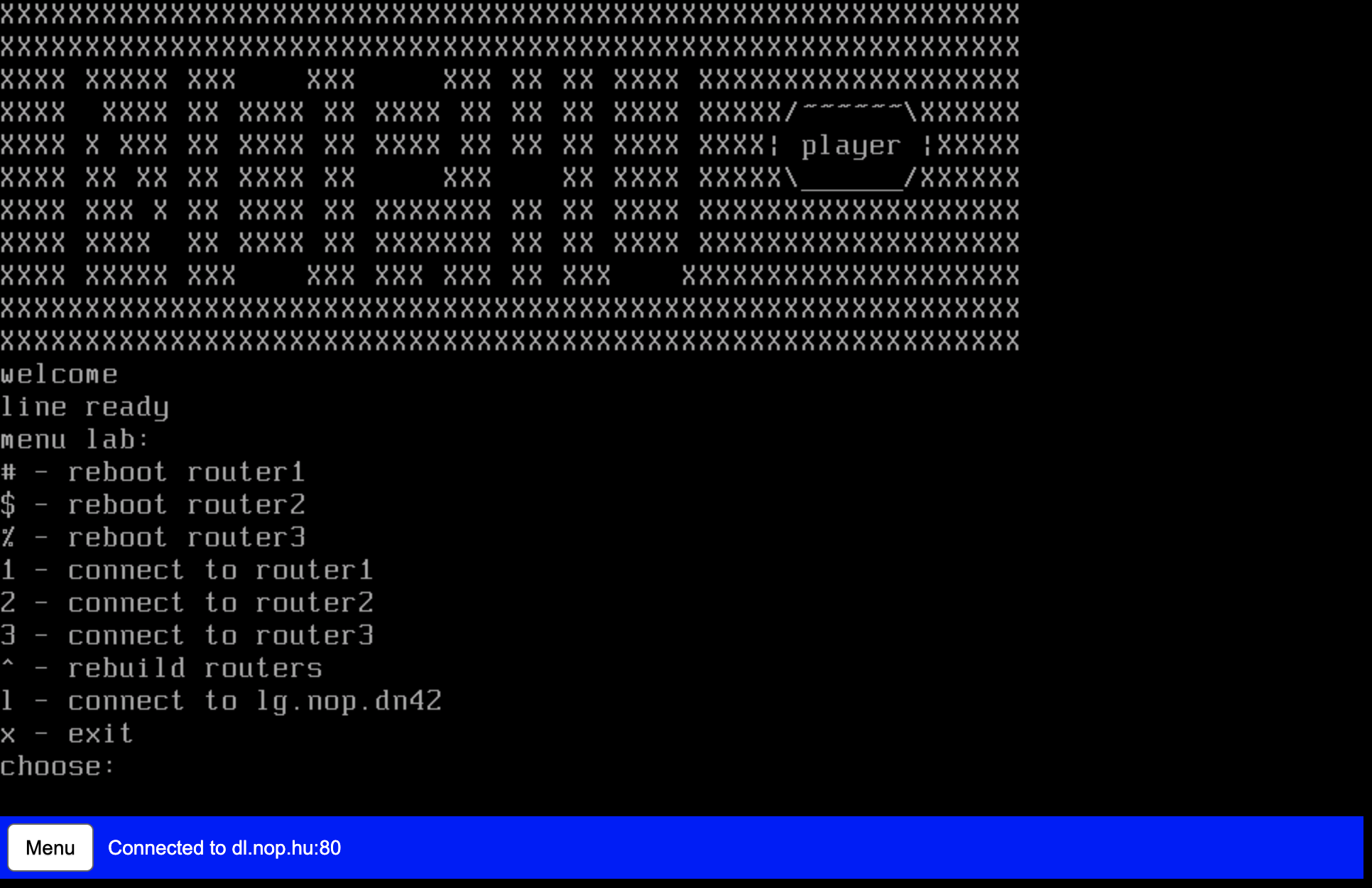This is a special blog series called "RARE Day One". I've always been a huge Cisco and JUNIPER fans, Cisco has unparalleled documentation and I really like JUNIPER "Day One" or "This Week" booklets. Similar to JUNIPER approach RARE "Day One" articles are dealing with essential topics that you need to get familiar with and that will become handy during your "RARE-freeRouter"-FU practices !
Requirement- Basic Linux/Unix knowledge
- Service provider networking knowledge
|  Image Modified Image Modified
|
Overview
Even in the era of zero touch configuration where everything can be modelled by YANG and automated by Ansible, CLI configuration mode is essential and will take a special important place into network engineers' heart.
...
| Expand |
|---|
|
"configure file" gives you to the possibility to update/merge running configuration from a local file from the flash filesystem. | Code Block |
|---|
| language | bash |
|---|
| theme | Midnight |
|---|
| title | route addition via freeRouter |
|---|
| r1#configure file ?
<file> - source file
r1#configure file
... |
This command take a <file> as argument. Basically it will load specified configuration from the specified <file> and update/merge the running-config. It is an equivalent to Cisco "copy <flash:file> run". So, from that point: | Code Block |
|---|
| language | bash |
|---|
| theme | Midnight |
|---|
| title | show flash |
|---|
| mjolnir#show flash /rtr
date size name
2009-12-31 23:00:00 18048 bundle.bin
2020-07-30 15:47:05 2477 c.sh
2009-12-31 23:00:00 22648 hdlcInt.bin
2020-08-26 07:35:35 2937 hwdet-all.sh
2020-07-31 13:31:28 203 hwdet-main.sh
2009-12-31 23:00:00 18616 mapInt.bin
2020-09-29 08:58:48 554856 mjolnir.log
2009-12-31 23:00:00 18088 modem.bin
2009-12-31 23:00:00 131432 p4dpdk.bin
2009-12-31 23:00:00 121896 p4emu.bin
2009-12-31 23:00:00 63144 p4pkt.bin
2009-12-31 23:00:00 18088 pcap2pcap.bin
2009-12-31 23:00:00 18608 pcapInt.bin
2009-12-31 23:00:00 18384 rawInt.bin
2020-09-28 11:54:12 598 rtr-hw.txt
2020-09-28 21:16:19 14607 rtr-sw.txt
2020-07-30 15:47:37 2022 rtr.err
2020-09-29 03:09:25 5587321 rtr.jar
2020-09-29 03:09:16 5585713 rtr.jar.bak
2020-09-29 03:09:26 24 rtr.rld
2020-09-23 03:06:12 529 rtr.scr
2020-09-23 03:06:11 483 rtr.scr.bak
2020-08-23 17:34:19 46 rtr.scr2
2020-08-23 17:34:18 0 rtr.scr2.bak
2020-09-23 03:06:11 542720 rtr.tar
2020-09-23 03:06:09 522240 rtr.tar.bak
2020-09-29 03:11:04 2330 rtr.ver
2020-09-29 03:11:03 3790694 rtr.zip
2020-09-29 03:10:57 3789659 rtr.zip.bak
2020-07-30 15:47:05 388 setup_dpdk.sh
2020-07-30 15:47:05 48 setup_route.sh
2020-07-30 15:47:05 2171 setup_veth.sh
2009-12-31 23:00:00 18048 stdLin.bin
2009-12-31 23:00:00 18440 tapInt.bin
2009-12-31 23:00:00 18224 ttyLin.bin
2009-12-31 23:00:00 18256 vlan.bin |
|
| Expand |
|---|
| title | configure filereplace |
|---|
|
"configure file" gives you to the possibility to replace running configuration from a local file from the flash filesystem. | Code Block |
|---|
| language | bash |
|---|
| theme | Midnight |
|---|
| title | route addition via freeRouter |
|---|
| r1#configure replace ?
<file> - source file
r1#configure replace
... |
This command take a <file> as argument. Basically it will load specified configuration from the specified <file> and replace the running-config. It is an equivalent to Cisco "copy <flash:file> run". So, from that point: | Code Block |
|---|
| language | bash |
|---|
| theme | Midnight |
|---|
| title | show flash |
|---|
| mjolnir#show flash /rtr
date size name
2009-12-31 23:00:00 18048 bundle.bin
2020-07-30 15:47:05 2477 c.sh
2009-12-31 23:00:00 22648 hdlcInt.bin
2020-08-26 07:35:35 2937 hwdet-all.sh
2020-07-31 13:31:28 203 hwdet-main.sh
2009-12-31 23:00:00 18616 mapInt.bin
2020-09-29 08:58:48 554856 mjolnir.log
2009-12-31 23:00:00 18088 modem.bin
2009-12-31 23:00:00 131432 p4dpdk.bin
2009-12-31 23:00:00 121896 p4emu.bin
2009-12-31 23:00:00 63144 p4pkt.bin
2009-12-31 23:00:00 18088 pcap2pcap.bin
2009-12-31 23:00:00 18608 pcapInt.bin
2009-12-31 23:00:00 18384 rawInt.bin
2020-09-28 11:54:12 598 rtr-hw.txt
2020-09-28 21:16:19 14607 rtr-sw.txt
2020-07-30 15:47:37 2022 rtr.err
2020-09-29 03:09:25 5587321 rtr.jar
2020-09-29 03:09:16 5585713 rtr.jar.bak
2020-09-29 03:09:26 24 rtr.rld
2020-09-23 03:06:12 529 rtr.scr
2020-09-23 03:06:11 483 rtr.scr.bak
2020-08-23 17:34:19 46 rtr.scr2
2020-08-23 17:34:18 0 rtr.scr2.bak
2020-09-23 03:06:11 542720 rtr.tar
2020-09-23 03:06:09 522240 rtr.tar.bak
2020-09-29 03:11:04 2330 rtr.ver
2020-09-29 03:11:03 3790694 rtr.zip
2020-09-29 03:10:57 3789659 rtr.zip.bak
2020-07-30 15:47:05 388 setup_dpdk.sh
2020-07-30 15:47:05 48 setup_route.sh
2020-07-30 15:47:05 2171 setup_veth.sh
2009-12-31 23:00:00 18048 stdLin.bin
2009-12-31 23:00:00 18440 tapInt.bin
2009-12-31 23:00:00 18224 ttyLin.bin
2009-12-31 23:00:00 18256 vlan.bin |
|
...
| Tip |
|---|
|
All these modes are not new. IOS, IOS-XR, IOX-XE, NW-OX, JUNOS have their own config mode that are somewhat similar. In any case freeRouter config mode implementation is meant to address all needs from the network operators perspective. As you can observe, configure mode has an impressive list of mode. Feel free to try and use them according to your environment taste! Last but not least, you can play with these different mode from this sandbox: | Code Block |
|---|
| language | bash |
|---|
| theme | Midnight |
|---|
| title | type "telnet dl.nop.hu" in a terminal and choose "1" |
|---|
| telnet dl.nop.hu 1 ↵
Trying 193.224.23.5...
Connected to dl.nop.hu.
Escape character is '^]'.
XXXXXXXXXXXXXXXXXXXXXXXXXXXXXXXXXXXXXXXXXXXXXXXXXXXXXXXXXXXX
XXXXXXXXXXXXXXXXXXXXXXXXXXXXXXXXXXXXXXXXXXXXXXXXXXXXXXXXXXXX
XXXX XXXXX XXX XXX XXX XX XX XXXX XXXXXXXXXXXXXXXXXXX
XXXX XXXX XX XXXX XX XXXX XX XX XX XXXX XXXXX/~~~~~~\XXXXXX
XXXX X XXX XX XXXX XX XXXX XX XX XX XXXX XXXX| player |XXXXX
XXXX XX XX XX XXXX XX XXX XX XXXX XXXXX\______/XXXXXX
XXXX XXX X XX XXXX XX XXXXXXX XX XX XXXX XXXXXXXXXXXXXXXXXXX
XXXX XXXX XX XXXX XX XXXXXXX XX XX XXXX XXXXXXXXXXXXXXXXXXX
XXXX XXXXX XXX XXX XXX XXX XX XXX XXXXXXXXXXXXXXXXXXXX
XXXXXXXXXXXXXXXXXXXXXXXXXXXXXXXXXXXXXXXXXXXXXXXXXXXXXXXXXXXX
XXXXXXXXXXXXXXXXXXXXXXXXXXXXXXXXXXXXXXXXXXXXXXXXXXXXXXXXXXXX
welcome
line ready
menu lab:
... |
| Code Block |
|---|
| language | bash |
|---|
| theme | Midnight |
|---|
| title | type "ssh dl.nop.hu" in a terminal (any user/pass will do) and choose "1" |
|---|
| ssh dl.nop.hu -l random_user 1 ↵
Warning: Permanently added 'dl.nop.hu,193.224.23.5' (RSA) to the list of known hosts.
random_user@dl.nop.hu's password:
XXXXXXXXXXXXXXXXXXXXXXXXXXXXXXXXXXXXXXXXXXXXXXXXXXXXXXXXXXXX
XXXXXXXXXXXXXXXXXXXXXXXXXXXXXXXXXXXXXXXXXXXXXXXXXXXXXXXXXXXX
XXXX XXXXX XXX XXX XXX XX XX XXXX XXXXXXXXXXXXXXXXXXX
XXXX XXXX XX XXXX XX XXXX XX XX XX XXXX XXXXX/~~~~~~\XXXXXX
XXXX X XXX XX XXXX XX XXXX XX XX XX XXXX XXXX| player |XXXXX
XXXX XX XX XX XXXX XX XXX XX XXXX XXXXX\______/XXXXXX
XXXX XXX X XX XXXX XX XXXXXXX XX XX XXXX XXXXXXXXXXXXXXXXXXX
XXXX XXXX XX XXXX XX XXXXXXX XX XX XXXX XXXXXXXXXXXXXXXXXXX
XXXX XXXXX XXX XXX XXX XXX XX XXX XXXXXXXXXXXXXXXXXXXX
XXXXXXXXXXXXXXXXXXXXXXXXXXXXXXXXXXXXXXXXXXXXXXXXXXXXXXXXXXXX
XXXXXXXXXXXXXXXXXXXXXXXXXXXXXXXXXXXXXXXXXXXXXXXXXXXXXXXXXXXX
welcome
line ready
menu lab:
# - reboot router1
$ - reboot router2
% - reboot router3
1 - connect to router1
2 - connect to router2
3 - connect to router3
^ - rebuild routers
l - connect to lg.nop.dn42
x - exit
choose:1 - attach vdc lab1
yourname#
yourname#configure ?
<cr>
banner - edit the banner
editor - configure from editor
file - append to running configuration
network - append to running configuration
overwrite-network - overwrite the running configuration
reapply - !!!EXPERiMENTAL!!! try to reapply current configuration
reload - overwrite the startup configuration
replace - overwrite the running configuration
revert - revert to startup configuration
rollback - configure within auto-revert session
startup - edit the startup configuration
terminal - configure from this terminal
viewer - view current configuration
yourname#configure
... |
In order to exit the sandbox session use the following escape sequence: Ctrl-c + Ctrl-x Another method to access the sandbox, by click here, this will open a terminal webapp into your browser:  Image Added Image Added
 Image Added Image Added
|


